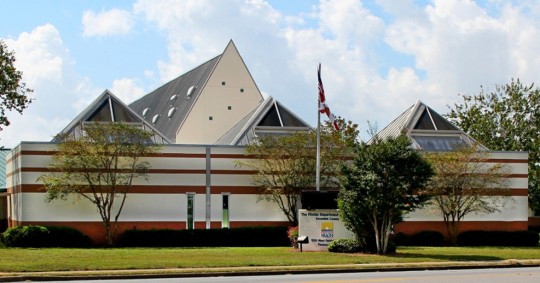Health Officials Issue Alert For Escambia Surface Waters
September 26, 2019
The Florida Department of Health in Escambia County has issued a health alert for the potential presence of cyanotoxins in surface waters of Escambia County. Cyanotoxins are toxins that can be produced by cyanobacteria (blue-green algae).
Recent water testing conducted by the Florida Department of Environmental Protection on September 23 showed very low levels of the cyanotoxin called Microcystin in Eleven Mile Creek downstream of the Mobile Highway bridge. The Microcystin level of 1.09 micrograms per liter is just above the laboratory method detection limit (capability of lab equipment to detect presence), but well below the level of 8.0 micrograms per liter which is the U.S. Environmental Protection Agency (USEPA) recommended basis for issuing a swimming advisory.
Blue-green algae (also known as cyanobacteria) can grow in Florida’s freshwater bodies. Large concentrations of these algae, called blooms, can change the water color to blue, green, brown, orange, or red. Blooms can appear year-round but are more frequent in summer and fall. Blue-green algae can grow rapidly and sometimes form a foamy surface scum and an unpleasant odor. Because algae blooms can remove oxygen from the water, fish kills can occur.
Don’t swallow, swim, wade, use personal watercraft, water ski, or boat in waters where there are algae blooms. Algae blooms can cause ear, eye, and skin reactions and hay fever and flu-like symptoms like diarrhea. Wash your skin and clothing with soap and water if you have contact with algae or discolored or smelly water.
Keep pets away from any area where there is an algae bloom and do not let them drink from water sources that are having algae blooms. Waters where there are algae blooms are not safe for animals. Pets and livestock should have a different source of water when algae blooms are present.
Do not cook or clean dishes with water contaminated by algae blooms. Boiling the water will not eliminate the toxins.
Fillets from healthy fish caught in freshwater lakes experiencing blooms are safe to eat. Rinse fish fillets with tap or bottled water, throw out the guts, and cook fish well. Do not eat shellfish from such locations.
Comments
7 Responses to “Health Officials Issue Alert For Escambia Surface Waters”




Here’s a link to to a handy dashboard for viewing the DEPs algae bloom samplings and related data, showing there’s not much sampling going on in our area. during high season for algae blooms.
floridadep.gov/algalbloom:
No tests done on Perdido
(Oops, I meant algae.)
The Bluff Springs Gravel Lakes are filled with a type of bacteria that remind you of this. I went swimming in it for a couple of hours without any problem but who knows?
We thank you, Century, for the fertilize and water flavors
(It’s all good.)
David for appreciation
I live on Perdido bay and need a resource for updated water test results. Thank you.
When was the 11 mile creek tested prior to this test result? How often are the water ways in the area supposed to be tested?
Is it safe for dogs to swim in the Perdido River ?